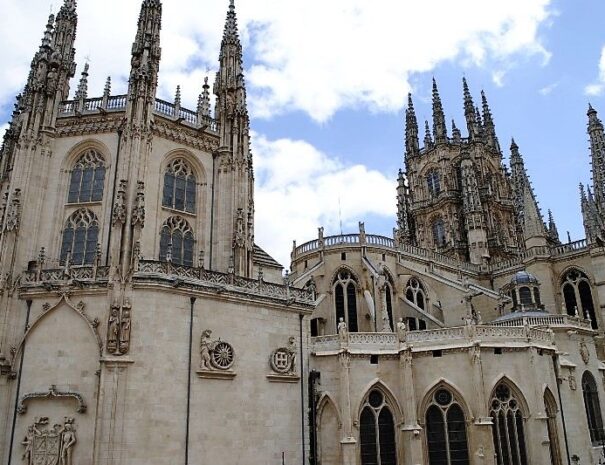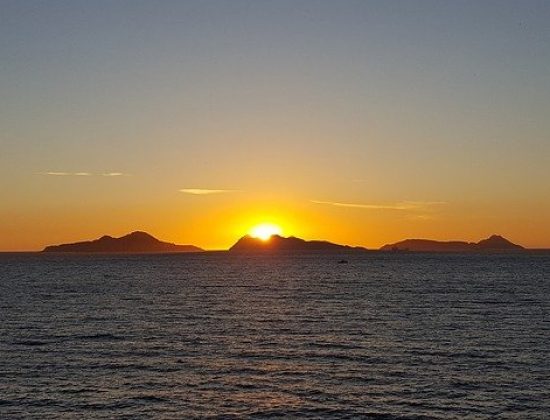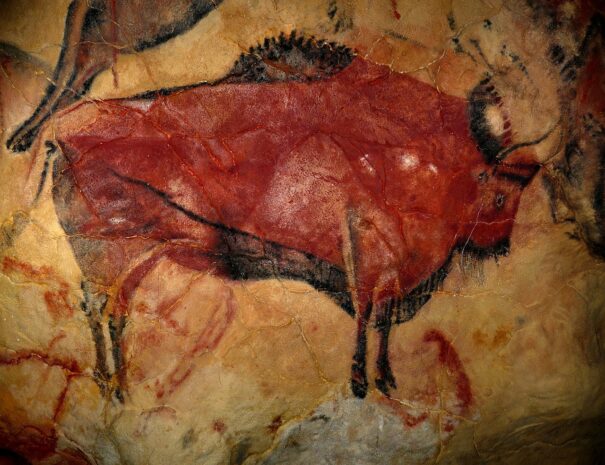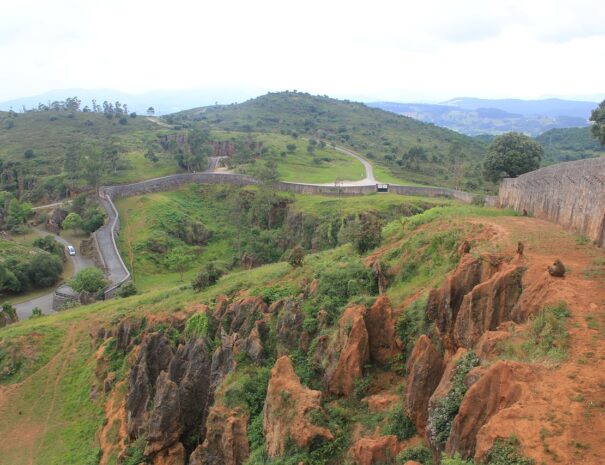
Burgos Cathedral
Check out our full guide to the world famous Burgos Cathedral, one of the most spectacular gothic-style cathedrals in Spain, and perhaps the world. … Read More
A spectacular, other worldly beach hand crafted by mother nature herself.
Located near Ribadeo, we find this spectacular beach that gives the Espacio Natural de As Catedrais its name. The Playa de las Catedrales beach is one of Spain´s top natural monuments. The natural domes at Playa de las Catedrales or Cathedral beach offer an unusual landscape of arches that make the visitor wonder about the force and beauty of nature.
The real name of the beach is Playa de las Aguas Santas (beach of sacred waters) though you should better call it Playa de las Catedrales if you ask for directions since it is the way everybody knows it.It is not clear when the beach started to be called like this, though the reason becomes obvious after having enjoyed the 30 meter high cliffs that nature draw and humans emulated in some of Spain´s Gothic cathedrals (including the nearby Cathedral of Santiago de Compostela)
IMPORTANT Since recent years, and due to the increasing number of visitors and the fragile environment, a ticket is needed to access the Playa de las Catedrales.
You should also pay attention to the tides to ensure you arrive at the best time.
La Playa de Las Catedralles is located in the northwestern region of Galicia, near the cities of A Coruña, and Lugo. If you are exploring the region of Galicia, A Coruña, in particular, is worth at least a day-long visit.
La Playa de las Catedrales is just an hour and a half from A Coruña by car. Lugo is slightly closer and it will take you just over an hour by car.
The coastal cliffs have been eroded for centuries, forming arches, some of which are 30 meters tall.
The rocks in the cliffs of the beach are made up of slate and quartzite. The orientation of the rock makes the current shape possible, with the constant pounding of waves during the movement of tides. Due to the fragility of the arches, only some of them remain.
This beach is best experienced during low tide, to be able to explore all of the beach’s caves and admire all the breathtaking natural arches.
If you are visiting the beach in summer, you will have to call ahead and make reservations. Easily one of the top beaches in Galicia.
The recommendation to visit the beach between 2 hours before and up to 2 hours after low tide. For example, if the tide schedule indicates that low tide is at 07:11 and 19:50, you have from 05:11 to 09:11 and from 17:50 to 21:50 to visit the beach and be able to walk through its gigantic rocks.
La Playa de las Catedrales has become increasingly famous and it is today a top tourist attraction in Galicia. This implies unfortunately many visitors during the high season. This has led the local authorities to request a pre-booking in order to be able to visit the beach. You will need to book well in advance to be able to enjoy the beach. You can book your visit from this link. Another option if to join a guided tour where you will be able to discover the beach, but much more, including Ribadeo. You can find an excellent option below.
The price of admission to Playa de las Catedrales is zero euros, that is, it is totally free, but if you choose to visit the beach on your own and not with a guided tour, it is essential to book a place (maximum one month in advance) on the official website for this purpose of the Xunta de Galicia del July 1 to September 30.
This is important to consider because during high tide it is impossible to enjoy this spectacular beach. During the low tide the sea water reaches its minimum height within the tidal cycle. The tides go down 2 times a day and rise another 2, which means that they are approximately 6 hours rising and another 6 falling.
You can check this schedule by months to plan the perfect trip.
A trip to Northern Spain offers many things you would typically not expect of Spain. The North offers a deep contrast with Southern Spain. Green landscapes, less tourists, fantastic gastronomy….

Check out our full guide to the world famous Burgos Cathedral, one of the most spectacular gothic-style cathedrals in Spain, and perhaps the world. … Read More

This chain of small islands are located off the coast of Galicia in northwestern Spain. The go from the Vigo estuary to Arousa. Within the park there are four distinct archipelagos the islands of Cíes, Ons, Sálvora y Cortegada. The islands are gorgeous, with a unique ecosystem, but the true richness of the park is located underwater.
The biodiversity of sea dwelling creatures in this coastal area is almost overwhelming. In addition, many legends and rumors swirl around these islands, making the all the more interesting and mysterious. The park, created in 2002, spans over 7.200 maritime hectares and 1.194 hectares on land. … Read More

Check out our guide to the famous Caves of Altamira in Cantabria. These spectacular caves feature some of the oldest cave painting ever found. … Read More

Check out our guide on Cabarceno Park, a beautiful nature park in Cantabria in northern Spain, home to over 120 species that live freely in the park … Read More
is proudly powered by WordPress